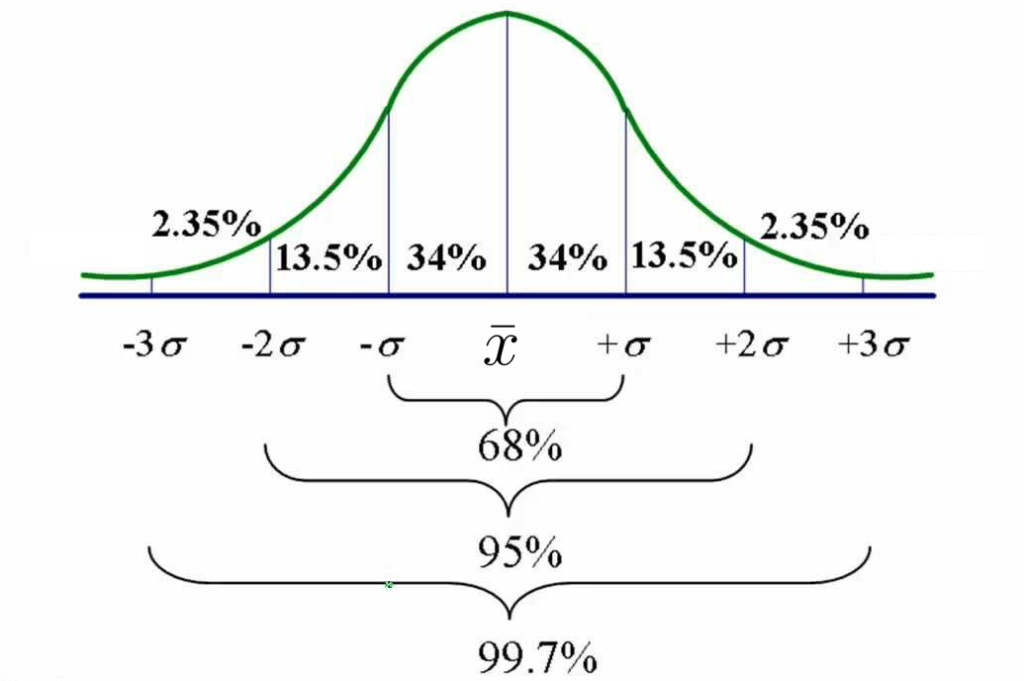
- The mean, the median and the mode are the same.
- The curve is bell-shaped.
- The curve is symmetrical about the mean.
- There are $68\%$ of the population fall into the interval $\bar{x}-\sigma$ and $\bar{x} + \sigma$.
- There are $95\%$ of the population fall into the interval $\bar{x}-2\sigma$ and $\bar{x} + 2\sigma$.
- There are $99.7\%$ of the population fall into the interval $\bar{x}-3\sigma$ and $\bar{x} + 3\sigma$.

